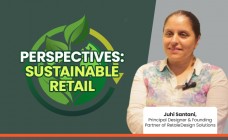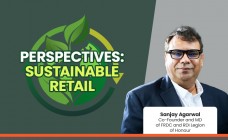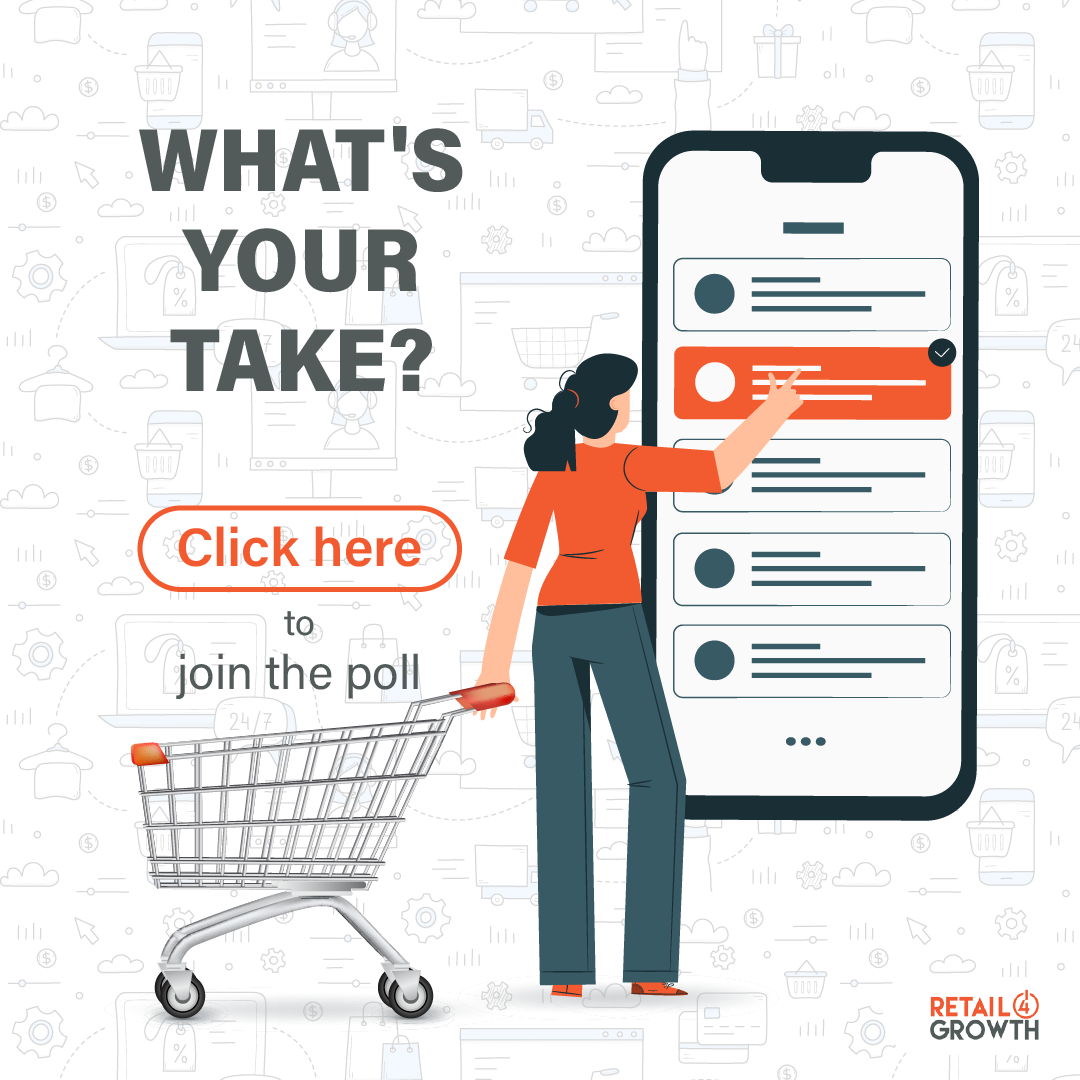‘Digital retail transformation is a people-centered, tech-aided journey, and not a tech-centric one’
By Retail4Growth Bureau | July 25, 2025
Anurag Sehgal, Managing Director of Digital Tranzform Pvt. Ltd., and a renowned interaction designer with 15+ years of experience in assisting Indian and international companies with turn-key digital transformation of their consumer & fulfilment funnels, shares his insights on popular digital transformation frameworks for retail, as part of this series on transforming front-end consumer experience with technology.

Digital Transformation for Retail: People-Centered, Process-Driven, Tech-aided and Future-Ready
The retail landscape is undergoing a profound metamorphosis, driven by evolving consumer expectations and technological advancements. However, it's crucial to understand that successful digital retail transformation is a "people-centered and tech-aided" journey, and not a "tech-centric" one. The goal isn't to put more or even the latest tech ‘gimmicks’ in stores, but to strategically deploy the right technology to enhance the entire retail process using the mantra – ‘Define the right thing & then define the thing right’.
Transforming the Retail Process: Beyond Digitization
Real retail transformation reimagines the entire retail journey, optimizing it for efficiency, customer satisfaction, and long-term growth. This transformation fundamentally redefines how retail operates, moving beyond simple digitization to truly transforming every aspect of the business.
This holistic approach is guided by one or more of the following frameworks:
1. Transformation Stakeholders: A 360-Degree Approach
A truly transformative retail strategy recognizes that digital initiatives impact all key stakeholders to create the ‘push & pull’:
- Dealers: Empowering dealers with digital tools and insights improves their operational efficiency and sales capabilities.
- Influencers: Engaging with online & offline last mile influencers and leveraging their reach can significantly expand a brand's visibility and credibility.
- Consumers: Placing the customer at the heart of the transformation ensures that technology serves to enhance their shopping experience, from discovery to post-purchase support.
- Sales Employees: Equipping sales associates with digital tools empowers them to provide personalized service, access real-time inventory, and close sales more effectively.
2. Seamless Omnichannel: The Core of Continuous Retail
The seamless omnichannel framework is paramount for continuous retail engagement. It differs from current practice of ‘multi-channel’ where a business runs offline and online channels with meek integration. Seamless omnichannel creates a seamless consumer journey across two critical retail pyramids:
The first pyramid encompasses the complete customer journey:
- Pre-retail: This phase focuses on engaging buyers at home through digital content, personalized recommendations, and targeted advertising, ultimately driving footfall to physical stores or traffic to online platforms.
- Retail: The in-store experience is optimized with technology to drive conversion, offering interactive displays, self-checkout options, and augmented reality tools.
- Post-retail: Digital channels facilitate post-purchase follow-ups, loyalty programs, customer support, and re-engagement strategies to encourage revisits and repeat conversions.
The second pyramid defines the three primary retail channels:
- At-home: This involves personalized consultations, virtual try-ons, and sales officers visiting homes, leveraging digital tools for a convenient and tailored experience.
- In-store: The physical store becomes a dynamic experience hub, seamlessly integrated with online information and services.
- Online: A robust and intuitive e-commerce platform provides a comprehensive retail experience, offering a wide selection and convenient purchasing options.
3. Consumer Ownership: Building Trust and Loyalty
Consumer ownership is driven by three crucial aspects that build trust and loyalty, especially when brands aggregate their backend operations:
- Quality Assurance: Digital tools can enhance transparency and traceability, ensuring consistent product quality.
- Timely Fulfilment: Efficient logistics and supply chain management, often digitally orchestrated, guarantee prompt delivery.
- Money Secured Assurance: Clear return policies, secure payment gateways, and responsive customer service provide peace of mind in case of issues.
While a brand can aggregate its backend - operations, procurement, supply, products, services, employees - the consumer-facing frontend is the non-negotiable built on these foundational pillars of trust, which has to be owned by all brands in this competitive landscape.
4. Direct-to-Consumer (D2C): Building Intimate Relationships
The Direct-to-Consumer (D2C) framework establishes direct channels between brands and their customers across all omnichannel touchpoints while applying principles of consumer ownership. This allows brands to cultivate more intimate relationships, gather valuable first-party data, and control the entire customer journey, leading to greater brand loyalty and profitability.
5. Assisted Commerce: From Listings to Consultations
The retail world is shifting from "listed commerce," where consumers are often overwhelmed by thousands of product listings, to "assisted commerce." In this model, brands act as trusted advisors, leveraging digital tools to consult consumers and aid their purchase decisions with personalized recommendations and expert guidance. An ‘unsaid’ rule of transformation is - Own the consultation, own the fulfilment. Asian Paints has colour consultation as an integral part of the consumer funnel, StitchFix, in the US, rapidly grew as a fashion player basis consultation and aggregated fulfilment.
6. Multiparty Aggregation: Scaling for Growth
Scalability for any brand increasingly comes through "multiparty aggregation." This involves aggregating fulfillment assets while maintaining direct consumer ownership via the three aspects mentioned earlier (quality, timely fulfillment, and money secured assurance). The evolution from single-party aggregation (like Uber for taxis) to multiparty models (like Zomato aggregating restaurants and riders, or livspace aggregating interior designers & contractors, or stitch fix aggregating stylists and clothing brands) demonstrates this trend. Similarly, in retail, this could involve aggregating diverse suppliers, logistics partners, or even independent sellers under a unified brand experience.
7. Last Mile Differentiation: Tailored Experiences
"Last mile differentiation" is a transformative framework driven by deep technology, allowing brands to customize products only at the very end of the customer journey. This minimizes dead stock and maximizes personalization. Industries like paints revolutionized with tinting machines, enabling dealers to offer thousands of shades on demand. Similarly, Subway restaurant crafts sandwiches exactly as preferred by the customer at the point of purchase. This approach ensures maximum customer satisfaction and reduces waste or dead stock. Brands like levis have also tested how they can laser etch denim washes to bring that product differentiation closer to last mile.
The Evolution of Frameworks and Future Outlook
Retail digital transformation is an ongoing journey, with older and newer frameworks constantly evolving. Digital Tranzform Private Limited actively tracks and defines industry-wise best practices, working with industry leaders, SMEs, and startups to navigate this complex landscape.
About the Author: Anurag has helped transform several industry segments like building material, real estate, automobiles, FMCG, fashion & jewelry, home appliances, personal electronics, food, sports and several others.
Check out Anurag Sehgal’s presentation at DDX Asia on the blueprint for digital retail transformation: https://youtu.be/8gBgXOQBqds

_165_265.jpg)







Comments